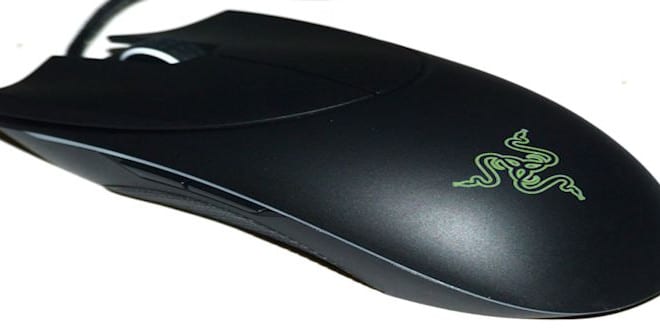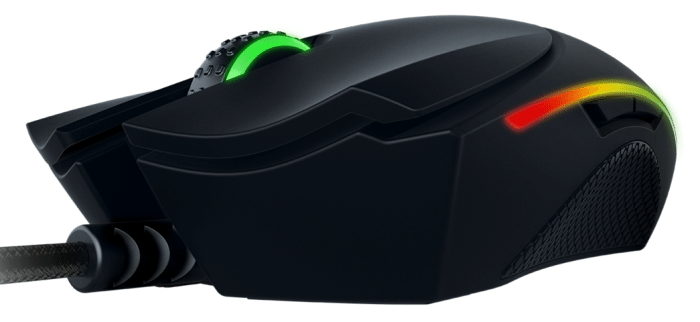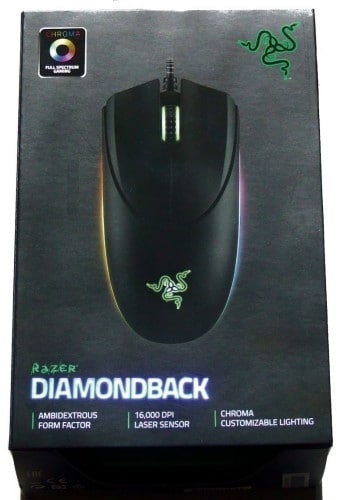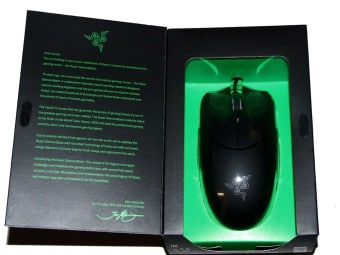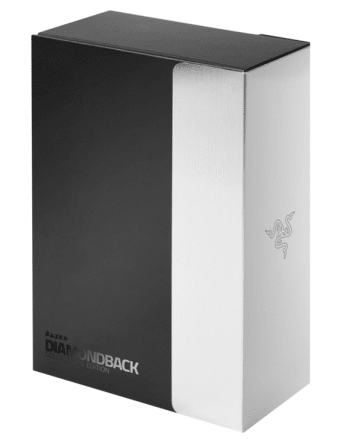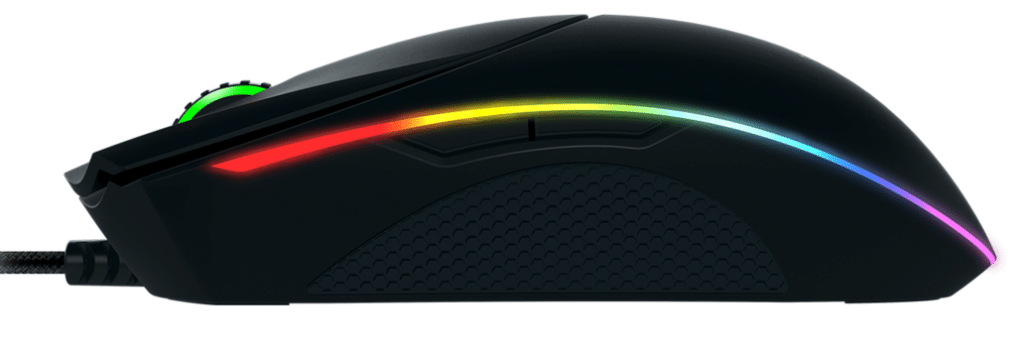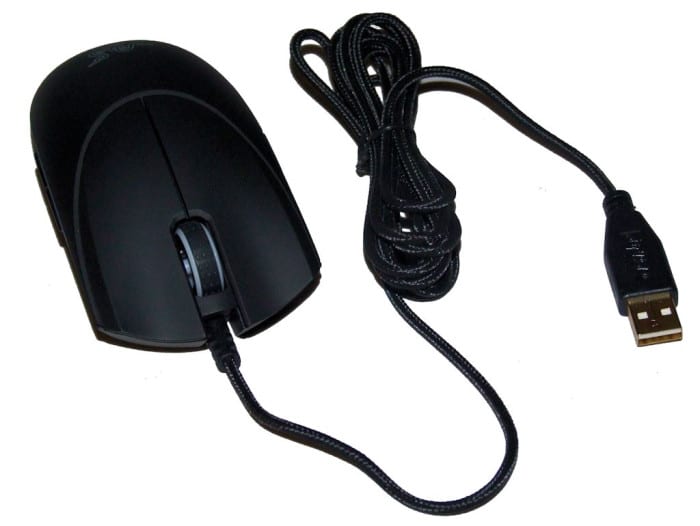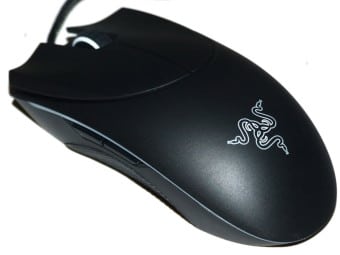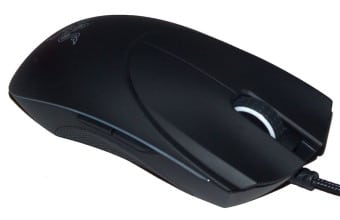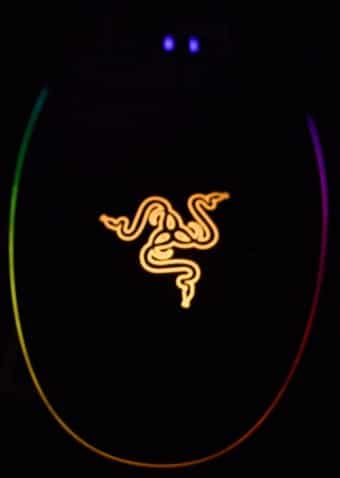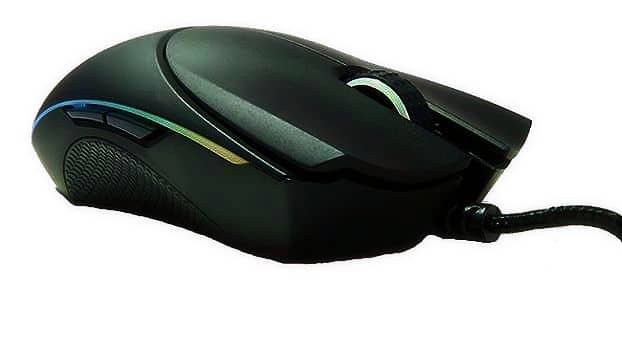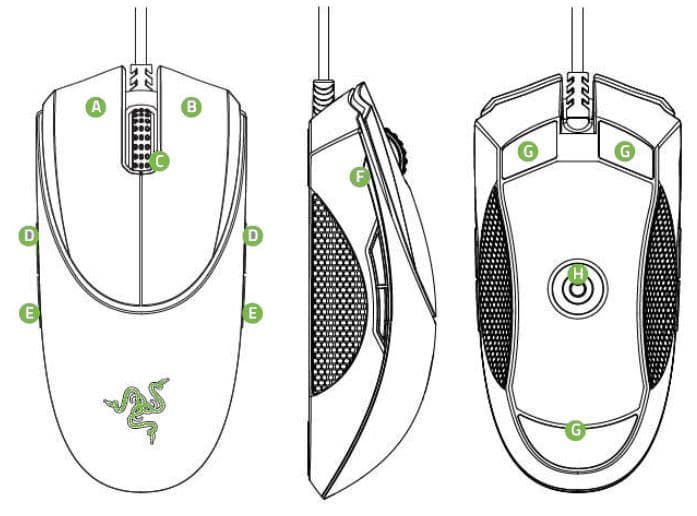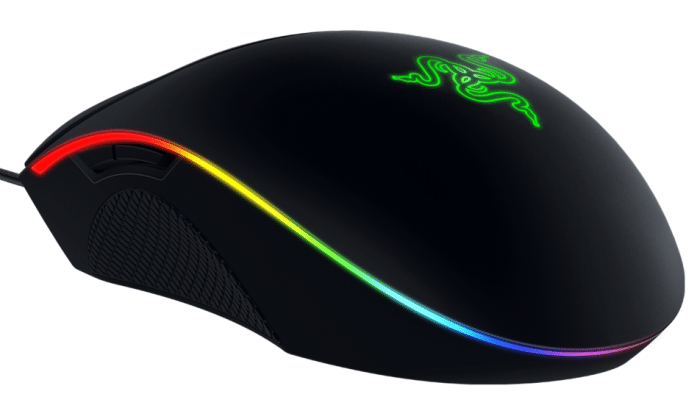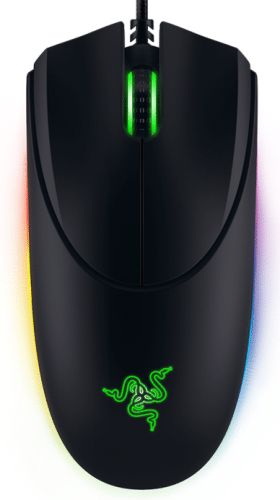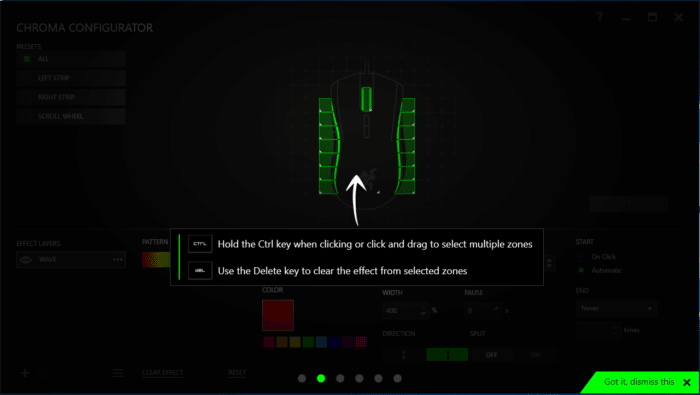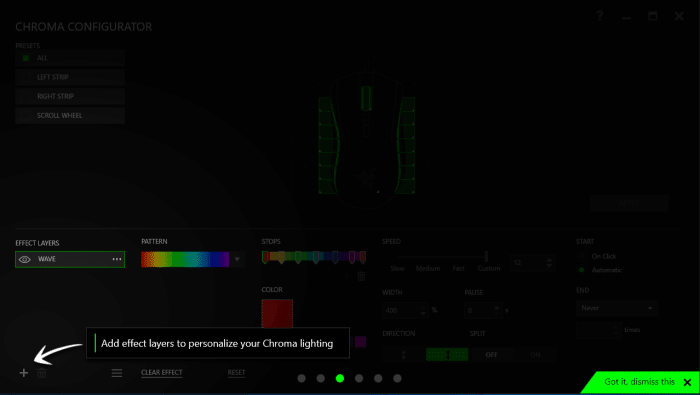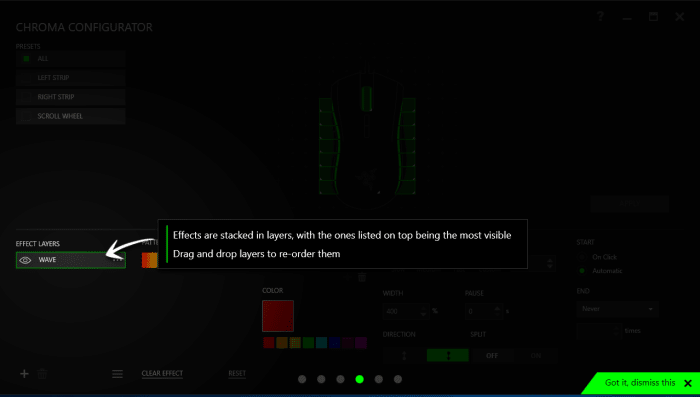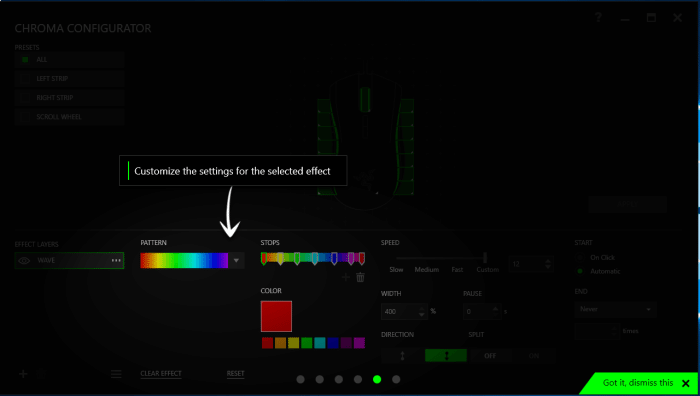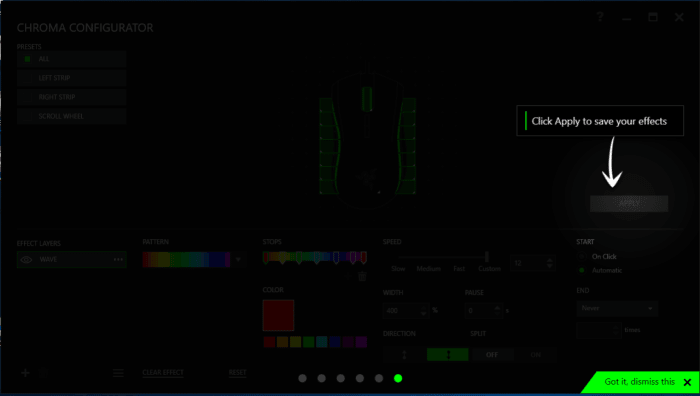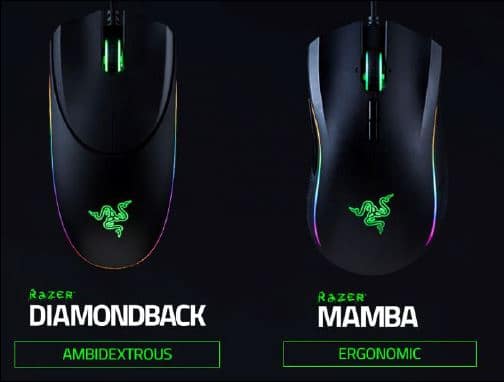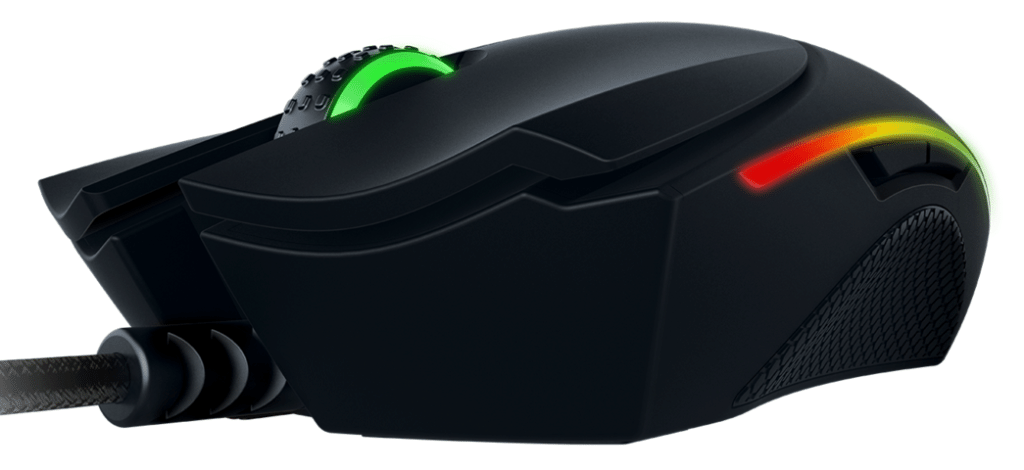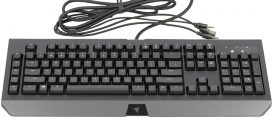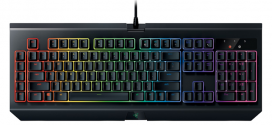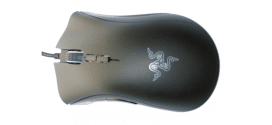Razer Diamondback 2015
Hello hardware enthusiast. We are now going to take a look at the beautiful re-imagining of the legendary Razer Diamondback. Originally designed with the help of the greatest eSports athletes of the time period, the 2004 World Cyber Games saw the debut of the Diamondback featuring the world’s first optical gaming sensor. The Diamondback took the world by storm, garnering an extensive list of awards, including Hardware of the Year 2004 (Gamespot), Editor’s Choice (PC Gamer), and Editor’s Choice (Computer Gaming World) to name a few on the list, and went on to become one of the best selling mice of all time. Now back once again with the ill behavior, the Razer Diamondback is ready to once again make some waves in the peripheral scene. Featuring an entirely new design that has stayed completely ambidextrous, the latest version of the Razer Diamondback includes the seamless function of Razer Synapse with Chroma 16.8 million color option customization ability backed with the world’s most precise gaming mouse sensor with 16,000 DPI.
 “Gaming innovations that are truly made for gamers, by gamers.”
“Gaming innovations that are truly made for gamers, by gamers.”
“The legacy not only lives on, but is now better than ever. We proudly present to you – the Razer Diamondback.”
Razer Diamondback Specifications
- Ambidextrous form factor
- 16,000 DPI 5G laser sensor
- Up to 210 inches per second / 50 g acceleration
- 1,000 Hz Ultrapolling
- On-The-Fly Sensitivity adjustment
- Chroma customizable lighting
- Inter-device color synchronization
- 7 programmable Hyperesponse buttons
- Razer Synapse enabled
- 2.1 m / 7 ft. braided fiber cable
- Approximate size: 125 mm / 4.92 in (Length) x 60 mm / 2.64 in (Width) x 30 mm / 1.18 in (Height)
- Approximate weight: 89g / 0.09 lbs. (without cable)
The Diamondback comes in the traditional Razer packaging and gives you a mean glare as it sits awaiting to unleash its raw technical power. There is also a collector’s edition available that comes with extra goodies and a different packaging layout which you will see below.
A Quick Look Into The Past
Since late 2004, the Razer Diamondback has continued to evolve with advances in technology and to fit the needs of gamers worldwide. Now, more than 7 years since the last iteration, the legend returns ready to re-assert why it has come to be known as one of the best peripheral devices ever created.
Back To The Future
It was truly love at first sight when we got our eyes on the new Diamondback. We enjoyed the subtle but bold styling; the mouse certainly demands attention when placed next to our testing rig. Razer did a great job blending smooth curved lines and crisp cut edges. Left hand dominant players will rejoice when greeted with the ambidextrous design. The lighting placement on the Diamondback is nothing short of perfect execution and in our opinion is one of the most aesthetically pleasing designs to ever hit the market.
Featuring a 2.1 m / 7 ft. braided fiber cable, the Diamondback also doubles as a jump rope workout partner if you just can’t make the gym. In all seriousness though, the cable length will be great for players that want to use their Diamondback while sitting away from the rig. Maybe you have a living room PC and want to sit on the couch and snipe noobs in comfort; the 7 ft cord has you covered.
Shhhhhh! The Diamondback is sleeping. If awoken it will open a 16,000 DPI 5G up to 210 inches per second / 50 g accelerated, 1000Hz Ultrapolled, On-The-Fly Sensitivity adjusted can of whoop-ass on the first unfortunate rival to cross it. Of course you can control just about every aspect of that “can”, and the Diamondback even has the ability to track up to 1 DPI increments and a lift-off cut-off distance as precise as 0.1 mm. The Diamondback adapts to your play style by responding with exacting precision.
To show off the Chroma 16.8 million color lighting in effect we turned down the lights and let the beauty shine. You can choose the colors of the mouse wheel, Razer logo, and outer ring independently, opening up some truly custom color options that you can match with all of your other Razer Chroma gear.
The new Diamondback has seven programmable Hyperesponse buttons that can be set to control whatever your heart desires, including macros. We’ll take a look at a diagram below to clearly show the location of the buttons and the overall layout of the Diamondback.
A. Left mouse button
B. Right mouse button
C. Scroll wheel
D. Mouse button 5
E. Mouse button 4
F. Side strip lighting
G. Ultraslick mouse feet
H. 16,000 DPI 5G sensor
We found the size and weight of the new Diamondback to be right on point. This, combined with the ultra slick mouse feet, made the Diamondback glide effortlessly across our game pad. The construction and materials feel solid in the hand and the size fit like a glove. We personally would have liked to see the rubbery compound on the sides cover a lot more real estate. Our personal grip places our thumb resting behind the side buttons when not in use, and our pinky finger in front of the buttons on the opposite side. Some nice rubber compound in those locations would have been welcomed.
Why 16,000 DPI? With today’s technology, monitor resolutions are getting higher then ever, and users may need to cover a lot of pixel ground, sometimes upward of 4320 pixels. To do this with a low DPI mouse would take many swipes and lifts over your game pad. With the ability to hit 16,000 DPI, you could breeze across all of your screens in a jiffy, then quick change the DPI to a lower setting to manage your armies. This is just one example, as you could slowly turn the DPI up yourself until you aim so quickly you make aimbots cry.
Razer Synapse Tutorial
When you first load Synapse, it gives you a tutorial, and many people are in such a hurry they just steam roll through the built-in tutorial. We are posting the tutorial screens for your convenience, as they really put the whole picture into perspective, and they should be the same for almost any Razer product. Before we get started into the tutorial pictures we would like to tell you that it’s best to learn Synapse as quickly as possible and don’t just leave everything default and ignore Synapse. Synapse is like the hive brain of Razer products and one of the things that makes them unique and personalized to your needs. Invest a few minutes here and there, learning and adjusting Synapse, and it will repay you with better gaming and more fun without having to search for keyboard keys as much. Synapse is so rich and vital to the Razer line of products that you can think of it as a visual programming language for Razer’s gear, except it’s easy to use with a very small and fast learning curve.
When you first get Synapse downloaded from the Razer website and get it installed, this is the first screen you see. The top left indicated by the arrow is to select the different available zones for Chroma Lighting. You can adjust it so all the zones do the same effect or every zone can do a different effect.
The second screen shows you how to hold the CTRL key and drag to select the zones you want to apply the effect to, it also tells you that to remove the effects from the zone you can use the Delete key.
The third screen threw us for a loop at first, but what they are telling you is that you can have the “Wave”, then switch to “Breathing”, then go to “Static”, and the zone or whole mouse will switch from one effect to another. Synapse and the Diamondback are totally configurable.
The fourth screen just shows you the effect stacking and that you can drag and drop effects to change the order.
The fifth screen shows you where you can further customize the effects with different patterns of color.
The sixth screen shows where to click to save the effects you’ve selected. This short tutorial barely scratches the surface of Synapse, and we will give you a few tips in the actual Synapse screen shots as well.
Razer Synapse
For an in-depth walkthrough of Razer Synapse, please follow the link below to our Razer Mamba, Wired & Wireless (Chroma) Mouse Review. The Razer Mamba features the same 16,000 DPI 5G laser sensor, 1,000 Hz Ultrapolling, Chroma customizable backlighting and uses the same internal technology. The difference lies in its form factor. The Razer Diamondback is ambidextrous and the Razer Mamba is ergonomic for right-handed use.
Razer Synapse Walkthrough
Final Thoughts & Conclusion

If we had to choose one thing to single out above all else that we liked about the Razer Diamondback, it would be the feel and response of the main left/right buttons. The travel and click are so crisp and defined. The shape and texture of the buttons slightly hug your fingers, keeping them right in place, while the mouse wheel compliments this joy with it’s textured rubber, no-slip compound and crisp defined movement when scrolling. For design we approve of what Razer has done with the Legend. Overall, the Diamondback just feels right. We only have two opinions on the design. First is the side walls, which come in at quite a steep angle, as we would enjoy a slightly flatter sidewall surface. For a pinky in a claw style type grip it made a nice little nook. For other styles of grip we found our fingers in the previously mentioned positions with no comfy rubber compound to enjoy. Second is that the scroll wheel made just a bit too much noise during standard use.
The Razer Diamondback gets the Bjorn3D Golden Bear Award for a few reasons. One being the style. When you first see the Diamondback in the box it has a modest look about it, compared to some of the other transformer looking devices available one may think it looks a little bland. Then you plug it in and get hit with that beautiful Chroma wave; the light placement on the mouse is beautiful and with full control over the zones, the mouse became our own custom instrument in moments. Another reason the Diamondback attained gold status is that it noticeably made us more effective in games. We would play a round with old faithful, our go to mouse, then play a round with the Diamondback. Every single time, the Diamondback round scores were noticeably higher; it was simply a more effective killing machine. Mind you, we’ve been using our other mouse for nearly two years. It’s our baby and we’re 100% accustomed to it’s personality. For another mouse to come in and instantly make us more effective on the playing field when not even 100% used to the feel is amazing, and that is why the Razer Diamondback is known as the Legend. When you start getting called a hacker, you know you’ve found a top-notch peripheral device.
| Pros | Cons |
|
|
 Bjorn3D.com Bjorn3d.com – Satisfying Your Daily Tech Cravings Since 1996
Bjorn3D.com Bjorn3d.com – Satisfying Your Daily Tech Cravings Since 1996
